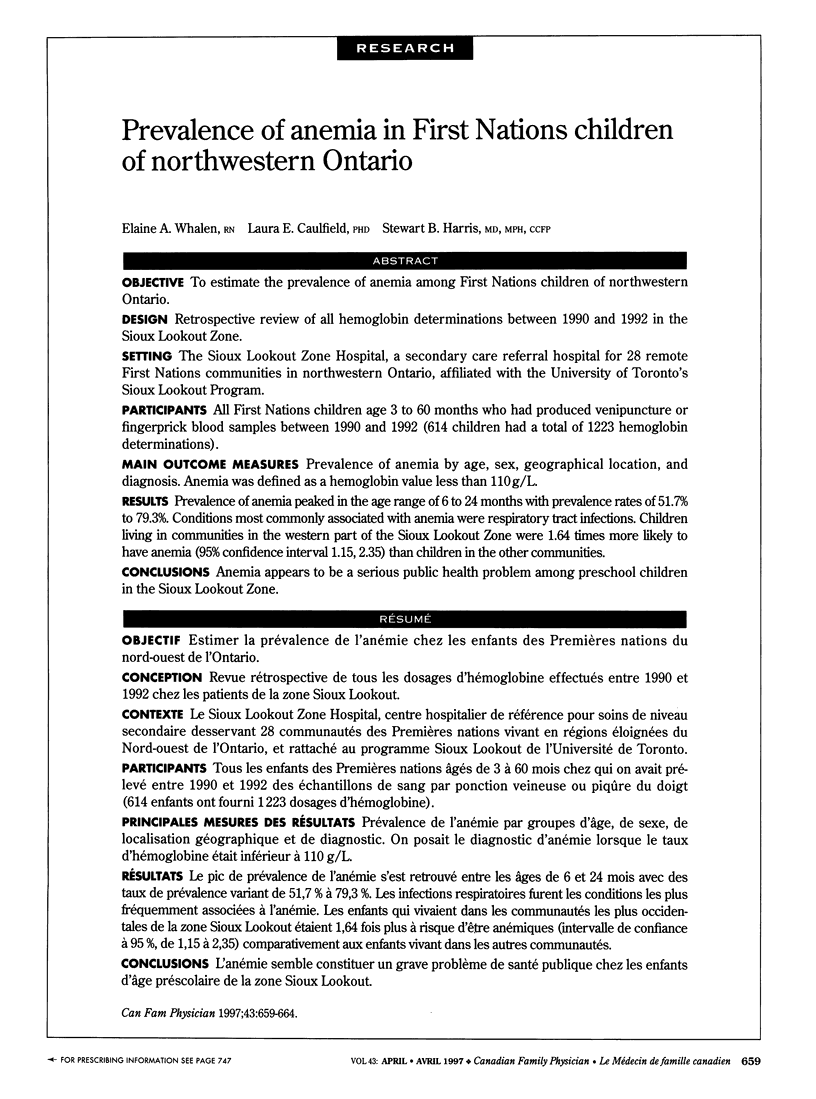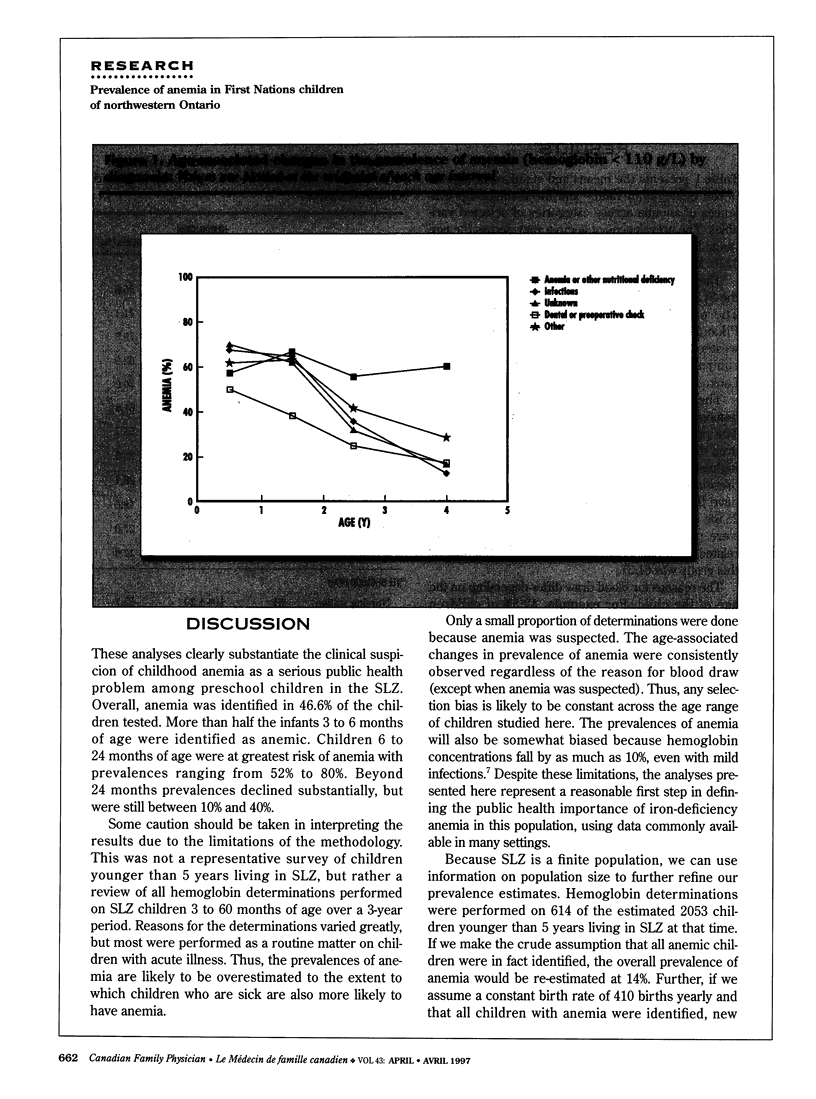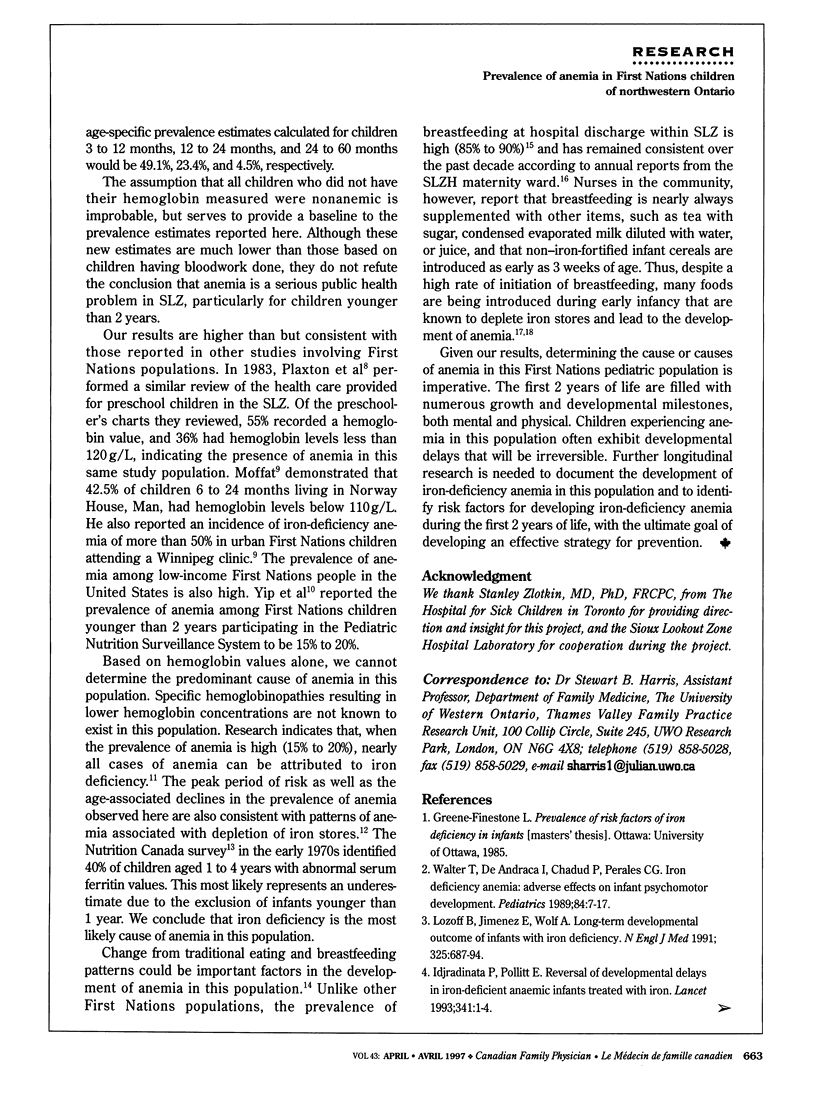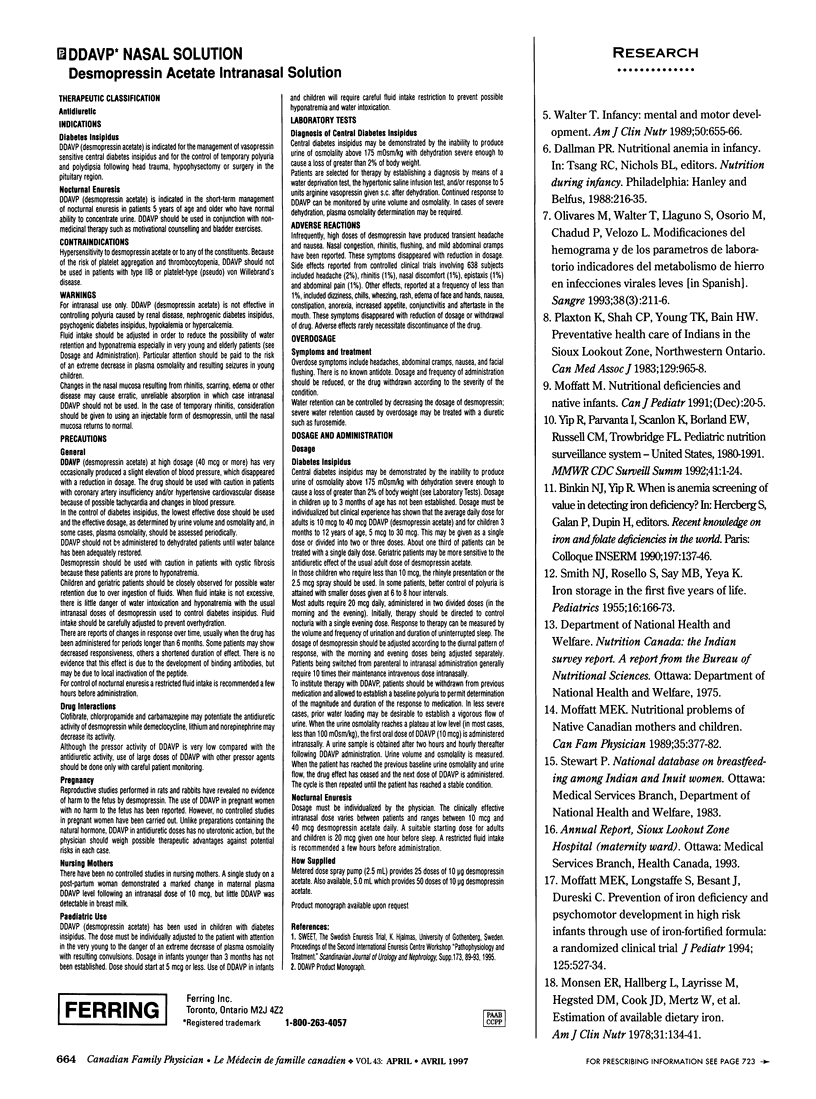Abstract
OBJECTIVE: To estimate the prevalence of anemia among First Nations children of northwestern Ontario. DESIGN: Retrospective review of all hemoglobin determinations between 1990 and 1992 in the Sioux Lookout Zone. SETTING: The Sioux Lookout Zone Hospital, a secondary care referral hospital for 28 remote First Nations communities in northwestern Ontario, affiliated with the University of Toronto's Sioux Lookout Program. PARTICIPANTS: All First Nations children age 3 to 60 months who had produced venipuncture or fingerprick blood samples between 1990 and 1992 (614 children had a total of 1223 hemoglobin determinations). MAIN OUTCOME MEASURES: Prevalence of anemia by age, sex, geographical location, and diagnosis. Anemia was defined as a hemoglobin value less than 110g/L. RESULTS: Prevalence of anemia peaked in the age range of 6 to 24 months with prevalence rates of 51.7% to 79.3%. Conditions most commonly associated with anemia were respiratory tract infections. Children living in communities in the western part of the Sioux Lookout Zone were 1.64 times more likely to have anemia (95% confidence interval 1.15, 2.35) than children in the other communities. CONCLUSIONS: Anemia appears to be a serious public health problem among preschool children in the Sioux Lookout Zone.
Full text
PDF





Selected References
These references are in PubMed. This may not be the complete list of references from this article.
- Idjradinata P., Pollitt E. Reversal of developmental delays in iron-deficient anaemic infants treated with iron. Lancet. 1993 Jan 2;341(8836):1–4. doi: 10.1016/0140-6736(93)92477-b. [DOI] [PubMed] [Google Scholar]
- Lozoff B., Jimenez E., Wolf A. W. Long-term developmental outcome of infants with iron deficiency. N Engl J Med. 1991 Sep 5;325(10):687–694. doi: 10.1056/NEJM199109053251004. [DOI] [PubMed] [Google Scholar]
- Moffatt M. E., Longstaffe S., Besant J., Dureski C. Prevention of iron deficiency and psychomotor decline in high-risk infants through use of iron-fortified infant formula: a randomized clinical trial. J Pediatr. 1994 Oct;125(4):527–534. doi: 10.1016/s0022-3476(94)70003-6. [DOI] [PubMed] [Google Scholar]
- Monsen E. R., Hallberg L., Layrisse M., Hegsted D. M., Cook J. D., Mertz W., Finch C. A. Estimation of available dietary iron. Am J Clin Nutr. 1978 Jan;31(1):134–141. doi: 10.1093/ajcn/31.1.134. [DOI] [PubMed] [Google Scholar]
- Olivares M., Walter T., Llaguno S., Osorio M., Chadud P., Velozo L. Modificaciones del hemograma y de los parámetros de laboratorio indicadores del metabolismo de hierro en infecciones virales leves. Sangre (Barc) 1993 Jun;38(3):211–216. [PubMed] [Google Scholar]
- Plaxton K., Shah C. P., Young T. K., Bain H. W. Preventive health care of Indian preschoolers in the Sioux Lookout Zone, northwestern Ontario. Can Med Assoc J. 1983 Nov 1;129(9):965–968. [PMC free article] [PubMed] [Google Scholar]
- SMITH N. J., ROSELLO S., SAY M. B., YEYA K. Iron storage in the first five years of life. Pediatrics. 1955 Aug;16(2):166–173. [PubMed] [Google Scholar]
- Walter T., De Andraca I., Chadud P., Perales C. G. Iron deficiency anemia: adverse effects on infant psychomotor development. Pediatrics. 1989 Jul;84(1):7–17. [PubMed] [Google Scholar]
- Walter T. Infancy: mental and motor development. Am J Clin Nutr. 1989 Sep;50(3 Suppl):655–666. doi: 10.1093/ajcn/50.3.655. [DOI] [PubMed] [Google Scholar]
- Yip R., Parvanta I., Scanlon K., Borland E. W., Russell C. M., Trowbridge F. L. Pediatric nutrition surveillance system--United States, 1980-1991. MMWR CDC Surveill Summ. 1992 Nov 27;41(7):1–24. [PubMed] [Google Scholar]


